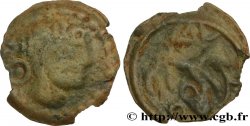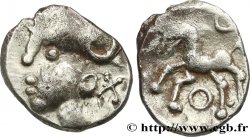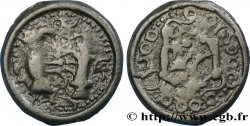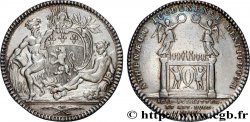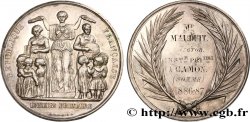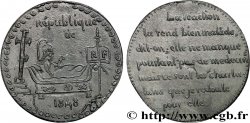v38_1540 - GALLIA - GALLIA DELLO SETTENTRIONALE - ÆDUI (BIBRACTE, Regione dello Mont-Beuvray) Denier LITAVICOS
MONNAIES 38 (2009)
Начальная цена : 280.00 €
Назначить цену : 450.00 €
Цена реализации : 287.00 €
Количество ставок : 2
Максимальная предлагаемая цена : 375.00 €
Начальная цена : 280.00 €
Назначить цену : 450.00 €
Цена реализации : 287.00 €
Количество ставок : 2
Максимальная предлагаемая цена : 375.00 €
Тип Denier LITAVICOS
Дата: c. 70-50 AC.
Монетный двор / Город: Autun (71)
Металл: silver
Диаметр: 13,5 mm
Ориентация осей монеты: 7 h.
Вес: 1,65 g.
Редкость: R2
Комментарии о состоянии
Superbe monnaie sur un flan un peu court et visiblement fourré. Le droit est d’une qualité de frappe inhabituelle et servi par une superbe patine mordorée. Le revers est un peu plus confus avec le métal très légèrement écrouis en surface
Ссылки в каталоге: :
Происхождение:
Cet exemplaire provient de la collection A.C.G.
Лицевая сторона
Аверс: легенда: ANÉPIGRAPHE.
Аверс: описание: Tête de femme drapée à droite ; lis ou carquois derrière l’épaule ; sceptre devant le visage.
Обратная сторона
Реверс: легенда: [LIT-AV-ICOS].
Реверс: Описание: Cavalier à droite, portant dans les mains une enseigne surmontée d’un sanglier, légende autour.
Комментарий
Bien qu’avec les types de droit et de revers complets, la légende LITAVICOS est presque complètement hors flan.
D’aspect très agréable, cette monnaie semble pourtant fourrée. De petites zones sombres sont visibles avec de petits manques d’argent laissant deviner l'âme en bronze. La qualité de gravure et de réalisation laisse à penser que cette monnaie fourrée est une frappe officielle pour économiser le métal précieux plutôt qu’un faux d’époque frappé à l'insu du pouvoir émetteur !.
Although with the obverse and reverse types complete, the legend LITAVICOS is almost completely off-flan. Although very pleasant in appearance, this coin nevertheless appears to be filled. Small dark areas are visible with small silver losses hinting at the bronze core. The quality of the engraving and execution suggests that this filled coin is an official strike to save precious metal rather than a contemporary fake struck without the knowledge of the issuing authority!
D’aspect très agréable, cette monnaie semble pourtant fourrée. De petites zones sombres sont visibles avec de petits manques d’argent laissant deviner l'âme en bronze. La qualité de gravure et de réalisation laisse à penser que cette monnaie fourrée est une frappe officielle pour économiser le métal précieux plutôt qu’un faux d’époque frappé à l'insu du pouvoir émetteur !.
Although with the obverse and reverse types complete, the legend LITAVICOS is almost completely off-flan. Although very pleasant in appearance, this coin nevertheless appears to be filled. Small dark areas are visible with small silver losses hinting at the bronze core. The quality of the engraving and execution suggests that this filled coin is an official strike to save precious metal rather than a contemporary fake struck without the knowledge of the issuing authority!







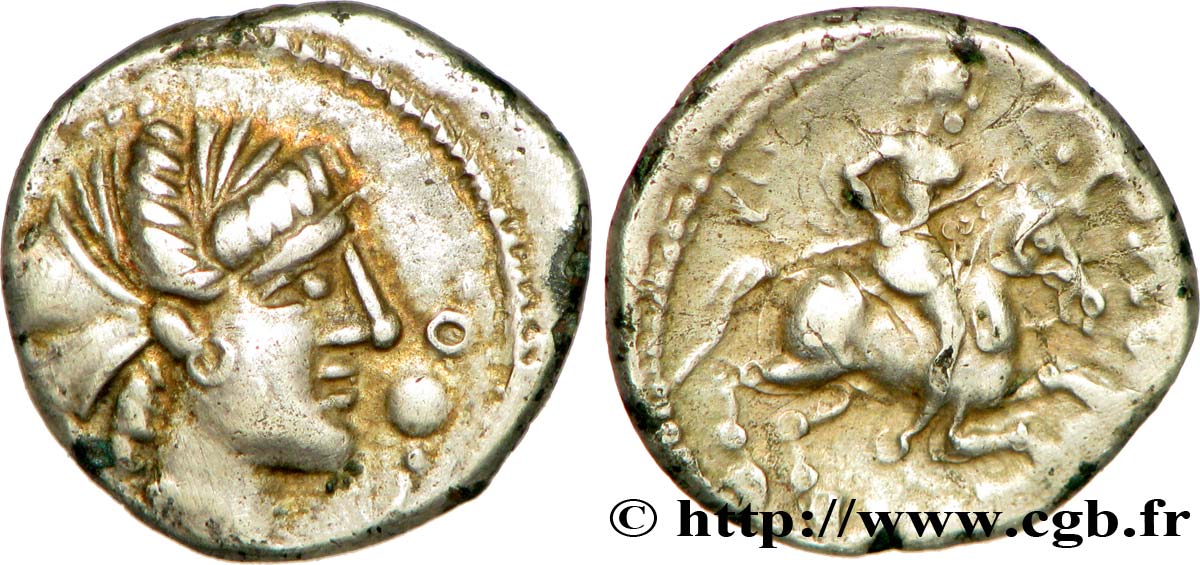
 Cообщить об ошибке
Cообщить об ошибке Распечатать страницу
Распечатать страницу Отправить мой выбор
Отправить мой выбор Задать вопрос
Задать вопрос Consign / sell
Consign / sell
 Информация
Информация
